Elephant Ear Plant
- October 31, 2023
- 0 comment
The Elephant Ear plant, scientifically known as Colocasia esculenta, is a striking and tropical foliage plant beloved for its impressive, elephant ear-shaped leaves. This lush, exotic beauty hails from Southeast Asia and the Pacific region, where it thrives in warm and humid climates.
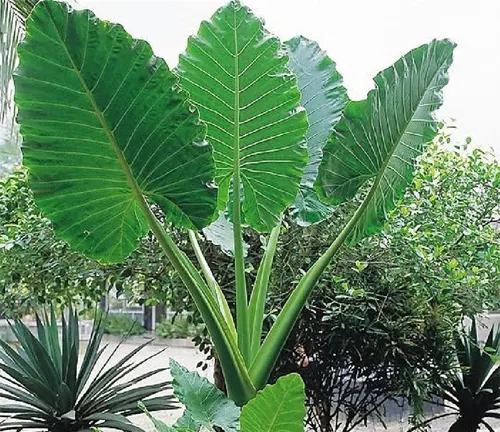
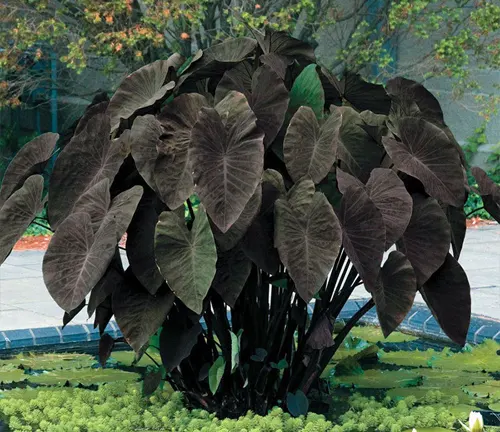
The heart-shaped leaves, which can grow up to three feet long, have a glossy appearance and come in various shades of green, often accented with striking veins or patterns. Elephant Ear plants are a popular choice for both indoor and outdoor gardening, with their dramatic foliage adding a touch of the tropics to any space.
While they can be cultivated in pots as indoor plants, they also make a captivating addition to garden landscapes, where they can reach impressive sizes. This plant requires well-drained soil and consistent moisture to thrive, and it can become a true statement piece in any plant collection, enhancing the ambiance with its bold and exotic allure.
| Characteristics | Description |
| Scientific Name | Colocasia esculenta |
| Common Names | Elephant Ear Plant, Taro, Dasheen |
| Family | Araceae |
| Origin | Southeast Asia, Pacific Islands |
| Plant Type | Herbaceous Perennial |
| Foliage | Large, heart-shaped leaves |
| Leaf Size | Up to 3 feet long |
| Leaf Color | Various shades of green with contrasting veins |
| Growth Habit | Clump-forming |
| Mature Height | Typically 3-6 feet indoors, up to 10 feet outdoors |
| Sunlight | Partial to full shade |
| Watering | Requires consistent moisture; keep soil evenly moist |
| Soil Type | Well-draining, rich, and organic |
| Temperature | Thrives in warm and humid conditions |
| Hardiness Zones | USDA Zones 8-11 |
| Maintenance | Low to moderate care, occasional pruning |
| Indoor/Outdoor | Suitable for both indoor and outdoor cultivation |
| Propagation | Through division of rhizomes or planting offsets |
| Common Uses | Decorative foliage plant, landscaping, potted plants, and ornamental gardens |
Botanical Beauty of “Elephant Ear Plant”
The Elephant Ear plant, scientifically known as Colocasia esculenta, stands out as a botanical wonder in the world of ornamental foliage. Its distinctive feature, the large, heart-shaped leaves, resembles the ears of an elephant, which explains its unique moniker. Native to the tropical regions of Southeast Asia and the Pacific Islands, this plant captivates all who encounter it with its striking, glossy leaves. These leaves come in various shades of green and often feature intricate veining or patterns, adding to the plant’s natural allure. In the realm of botanical beauty, the Elephant Ear plant is an outstanding example of how nature’s designs can be both dramatic and elegant.

Woodland Elegance

The elegance of the Elephant Ear plant doesn’t stop at its striking appearance; it extends to its ecological significance as well. In its native habitats, these plants can be found in lush, forested areas. Their expansive leaves create a verdant canopy on the forest floor, offering shelter and sustenance to various wildlife. As they thrive in partial to full shade, they are a quintessential component of woodland ecosystems, adding an element of grace to these environments. These large leaves act as natural umbrellas, sheltering smaller plants and animals from the intense tropical sun and heavy rains.
Ecological Importance
The Elephant Ear plant plays a vital role in its ecosystem by providing sustenance and habitat. The roots and tubers of this plant are not only a dietary staple for many indigenous people but also a food source for wildlife, including various birds and insects. Furthermore, the plant’s dense foliage serves as a protective habitat for numerous small creatures. It’s a testament to the interconnectedness of species and the ecological importance of even the most visually striking flora.
Cultivation and Conservation
Given its appeal, the Elephant Ear plant is cultivated and cherished by gardeners worldwide. However, its growing popularity has led to concerns about its conservation in the wild. In its native regions, habitat destruction and overharvesting pose threats to its existence. To address these concerns, botanical gardens and conservationists are working to preserve and protect this species, ensuring its continued existence for generations to come.
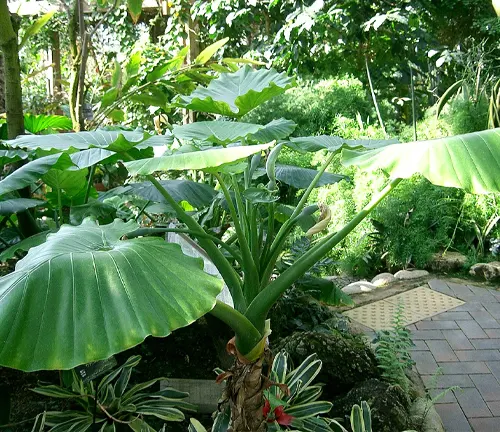
Fragrance
Though primarily known for its stunning leaves, the Elephant Ear plant has an added dimension of allure – its fragrance. When in bloom, it produces fragrant flowers that can be a pleasant surprise for those who encounter them. The scent varies among different species and cultivars, ranging from sweet and tropical to earthy and musky. This fragrant aspect of the plant further enhances its appeal in the garden.
Soil Stabilization
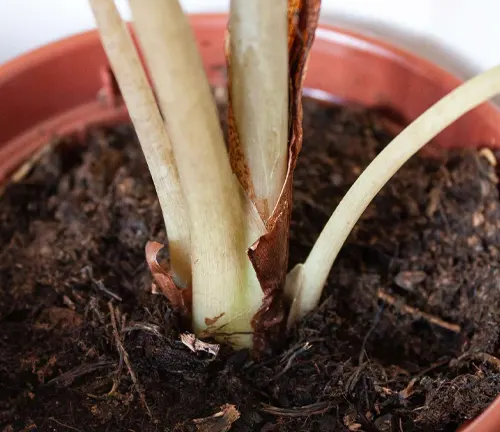
Beyond its aesthetic and aromatic qualities, the Elephant Ear plant serves a practical purpose in the garden. Its robust root system helps stabilize soil, particularly in areas prone to erosion. This makes it a valuable addition to landscapes, not only for its beauty but also for its soil-anchoring capabilities.
Common Uses
As a versatile and captivating plant, the Elephant Ear has a range of common uses. In tropical and subtropical regions, it is a popular choice for landscaping, and creating lush, exotic gardens. Additionally, it thrives as a potted plant indoors, bringing a touch of the tropics to any home. Its striking foliage and unique appearance make it a favorite for ornamental gardens, enhancing the overall ambiance.
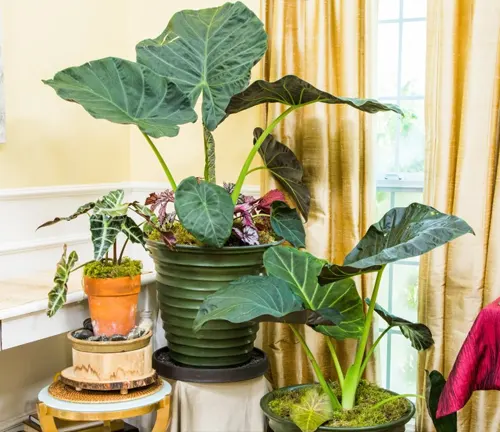
Benefits
The benefits of cultivating Elephant Ear plants are numerous. They provide not only aesthetic beauty but also serve ecological purposes, including sheltering wildlife and stabilizing soil. The plants’ adaptability to indoor and outdoor environments makes them a versatile choice for plant enthusiasts and gardeners. Furthermore, their fragrant blooms add an extra layer of sensory delight to any garden or living space. As conservation efforts continue, we can appreciate the botanical beauty of the Elephant Ear plant while contributing to its preservation in its native habitats.
Different Species
Colocasia esculenta
This is the most common and widely recognized species of Elephant Ear plant. It features large, green, heart-shaped leaves with prominent veining. Colocasia esculenta is known for its edible tubers, and it’s often cultivated for both ornamental and culinary purposes.
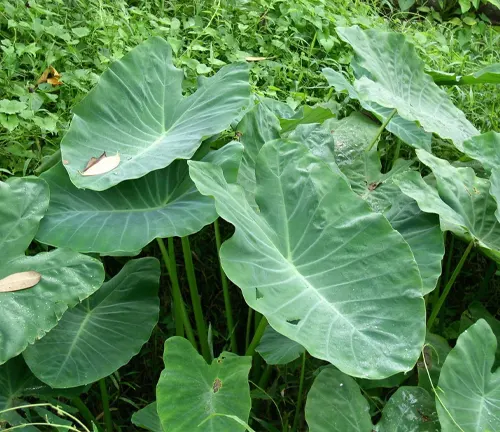

Alocasia macrorrhizos
Also known as Giant Taro or Giant Elephant Ear, this species features enormous, glossy, arrowhead-shaped leaves. Alocasia macrorrhizos is prized for its impressive size and distinctive foliage.
Xanthosoma sagittifolium
Commonly called Tannia or Arrowleaf Elephant Ear, this species has arrowhead-shaped leaves, and it’s valued for its edible corms. It’s native to the Caribbean and Central and South America.
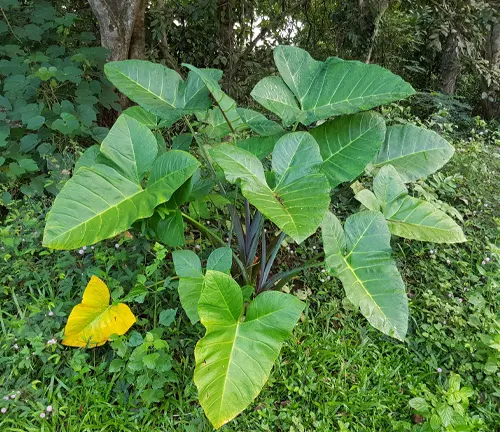
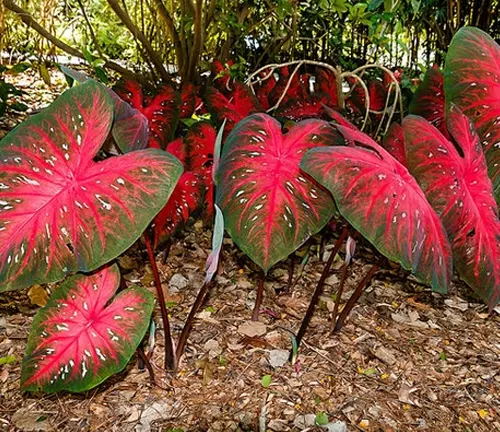
Caladium bicolor
While it’s often included in discussions of Elephant Ear plants, Caladium bicolor, or Angel Wings, is a different genus. This species is known for its colorful and variegated heart-shaped leaves, making it a popular choice for ornamental gardens.
Alocasia amazonica
This species, also known as African Mask Plant, has striking, dark green leaves with contrasting white or silvery veins, resembling a mask. It’s a favorite among indoor plant enthusiasts.
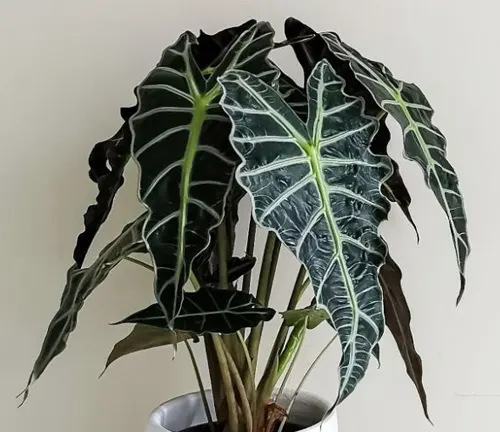
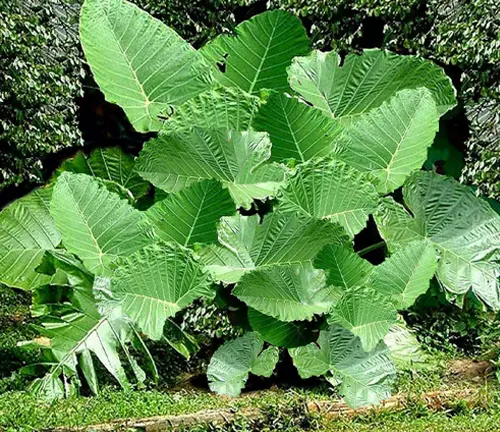
Colocasia gigantea
As the name suggests, this Elephant Ear plant is known for its gigantic leaves, which can grow up to four feet long. It’s a stunning addition to gardens, creating a dramatic tropical ambiance.
Alocasia polly
Often referred to as African Mask Plant or Polly African Mask Plant, this species is appreciated for its compact size, striking leaves with dark green and white markings, and its adaptability as a houseplant.
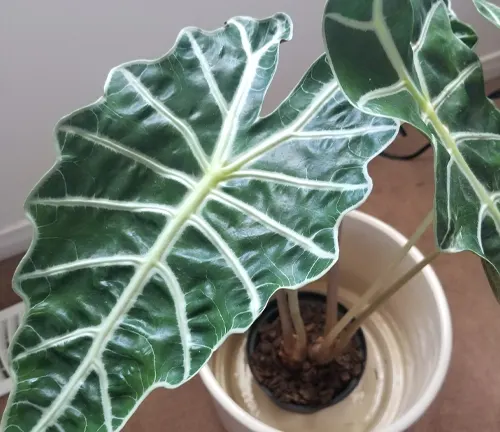
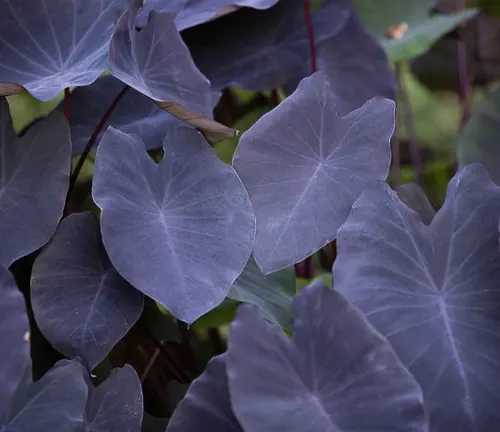
Colocasia ‘Black Magic’
This cultivar of Colocasia esculenta is known for its dark, almost black, leaves with contrasting veins. It adds a touch of mystery and drama to the garden.
Colocasia ‘Mojito’
This cultivar features green leaves with white flecks and pink veins, creating a unique and visually appealing foliage pattern.

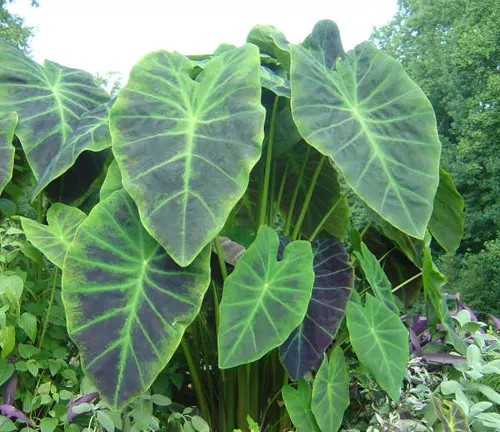
Colocasia ‘Illustris’
Known for its deep, velvety, almost black leaves with prominent green veins, ‘Illustris’ is a striking Elephant Ear plant that adds a touch of elegance to gardens.
Frequently Asked Questions (FAQs)
- What is an Elephant Ear plant?
An Elephant Ear plant is a tropical and subtropical foliage plant known for its large, heart-shaped leaves that resemble elephant ears. It belongs to the Colocasia and Alocasia genera and is grown for its ornamental beauty. - How do I care for my Elephant Ear plant indoors?
Provide bright, indirect light, well-draining soil, and consistent moisture. Keep the plant away from direct sunlight and drafty areas. Maintain humidity and temperature levels suitable for tropical plants. - Can Elephant Ear plants grow outdoors?
Yes, Elephant Ear plants can thrive in outdoor gardens, especially in warm, humid climates. They prefer partial to full shade and well-draining soil. In cooler climates, they can be grown in containers and brought indoors during winter. - How often should I water my Elephant Ear plant?
Elephant Ear plants prefer consistently moist soil. Water when the top inch of the soil feels dry. Avoid overwatering, which can lead to root rot. - How can I propagate my Elephant Ear plant?
Propagation is typically done through division or offsets. Carefully separate the rhizomes (underground stems) and plant them in new containers or garden spots. - What should I do about yellowing leaves on my Elephant Ear plant?
Yellowing leaves can indicate overwatering, insufficient light, or a lack of nutrients. Adjust your care routine to address the specific issue. - Are Elephant Ear plants toxic to pets and humans?
Yes, Elephant Ear plants are toxic if ingested. They contain oxalates, which can cause irritation and discomfort when consumed. Keep them out of reach of pets and children. - Do Elephant Ear plants bloom?
Yes, Elephant Ear plants produce inflorescences with small, inconspicuous flowers. While their primary attraction is the foliage, some people appreciate the fragrant blooms. - Can Elephant Ear plants be grown in containers?
Yes, they can be grown in pots or containers, making them suitable for patios, balconies, or indoor spaces. Choose a spacious pot with good drainage. - What is the difference between Colocasia and Alocasia Elephant Ear plants?
While both genera are commonly referred to as Elephant Ear plants, there are differences in their appearance and care. Colocasia leaves are typically more heart-shaped, and they prefer more moisture, while Alocasia leaves often have unique shapes, and they prefer slightly drier conditions. - How can I overwinter my Elephant Ear plant in a cold climate?
You can lift the rhizomes in the fall before the first frost, allow them to dry, and store them in a cool, dry place until the following spring. Replant them when the weather warms up. - What is the significance of the unique leaf patterns in Elephant Ear plants?
The leaf patterns, veins, and colors can vary widely between species and cultivars, adding to their aesthetic appeal and making them popular choices for ornamental gardens.


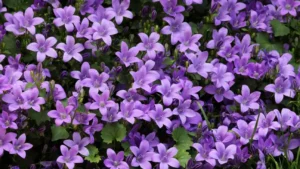
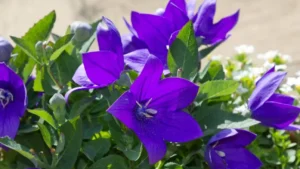


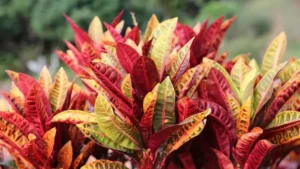
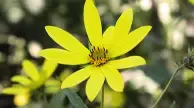

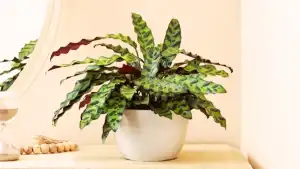


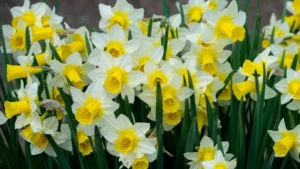

Leave your comment